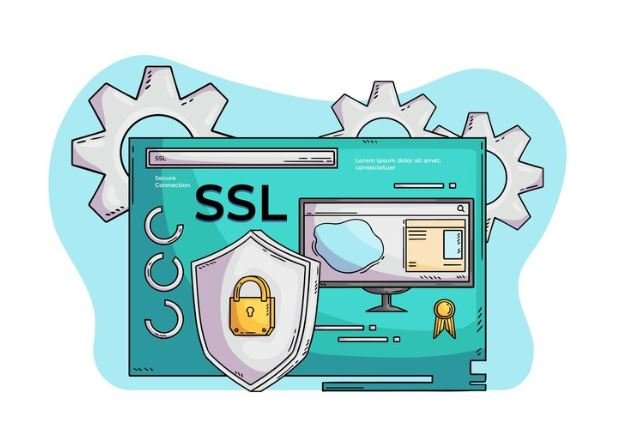AWS Amazon Cognito is a service which is offered by AWS (Amazon web services) to help developers manage authentication, authorization, and identity management for applications. It enables applications to securely communicate with AWS resources, as well as manage user sessions.
This mechanism considerably relies on the access token which consents to the information (or claims) about which user or application is trying to access the very system.
One of Cognito’s advanced features is inserting custom claims into access tokens. These claims enable you to pass in more information into the token that your application may use for custom authorization logic.
In the context of the Client Credentials Flow, a specific way of obtaining an access token for machine-to-machine communication, custom claims become even handier.
What Are Custom Claims in Cognito?
A claim is some information about the owner of a token. Examples of such claims would be:
- The user’s ID.
- Roles being assigned to the user
- A time after which the token is no longer valid.
Custom claims are extra data you choose to add to the access token. The following could be specific attributes about the user or application, such as permissions, organization IDs, or custom metadata that is referenced by your application.

For example, a custom claim might look like this in the access token:
{
"custom:organization_id": "12345",
"custom:role": "admin"
}What Is the Client Credentials Flow?
The Client Credentials Flow is an OAuth 2.0 flow for machine-to-machine communication. In this flow:
- There is no user involved.
- A client (the application) will request an access token directly from Cognito, sending along its client ID and client secret.
- The access token therefore needs to access the protected resources.
- Bearer token flow: This flow is typically used when a server-side application needs to authenticate itself to another service without requiring a user to log in.
How Custom Claims Work in the Client Credentials Flow
In other words, in Cognito’s Client Credentials Flow, the access token does not contain user-specific claims as no user is involved. But you can set up Cognito to also add custom claims per the client application.
In this context, custom claims may include:
- Specific Client Permissions
- The tier of the application (such as “free” or “premium”).
- Details regarding the client (if any).
- Configuring Custom Claims in Cognito
Let us run through the steps of adding custom claims to access tokens. This is how you can do it in AWS Cognito:
Setting Up Custom Claims in Cognito
First, a Cognito User Pool, which handles authentication, and an App Client, formally representing the app communicating with Cognito.
- Open the AWS Management Console and create a Cognito User Pool.
- In the App Client settings, enable “Client Credentials” to configure the App Client to support the Client Credentials Flow.
Use Lambda Triggers for Custom Claims
So here is where we can customize our access tokens with AWS Cognito using Lambda Triggers. The most frequent trigger for this purpose is the Token Generation Trigger. This trigger allows you to modify the access token before you issue it.
Here’s an example Lambda function that adds custom claims to the token:
def lambda_handler(event, context):
# Add custom claims
event['response']['claimsOverrideDetails'] = {
'claimsToAddOrOverride': {
'custom:role': 'admin',
'custom:organization_id': '12345'
}
}
return eventThis function adds custom:role and custom:organization_id claims to the token.
Test the Client Credentials Flow
Test the Client Credentials Flow with Postman or simple script You will be required to use the client id and client secret to obtain an access token.
Example cURL command:
curl -X POST \
-H "Content-Type: application/x-www-form-urlencoded" \
-d "grant_type=client_credentials&client_id=your_client_id&client_secret=your_client_secret" \
https://your_cognito_domain/oauth2/tokenThis returns an access token that can be decoded to check the custom claims.

Why Use Custom Claims?
Custom Claims are good for multiple reasons:
- Authorization: You can put permissions or roles as part of the token itself, so the backend can easily enforce access control.
- Customizable: Include client- or application-specific information without changing the default token format.
- Avoid costly extra database lookups by including data in the token that is normally fetched from the database.
For example, a claim like custom: role can allow your backend API to choose whether to serve a specific resource to a specific client or not.
Best Practices for Using Custom Claims
- Able to Fit in a Browser Session: JSON web tokens are intended to carry data that has been encoded. One of these excessive claims can make the token bigger and affect performance.
- Protect Sensitive Data: Tokens should NEVER contain sensitive information, such as passwords or private keys.
- You Are Well-Aware A Token is a piece of data that passes through different scopes on every request; hence its expiration dates should be set properly to mitigate the risk of misuse in case it gets stolen.
- Validate Tokens Always validate access tokens on the rodeo to ensure they are legit and have not expired.
Common Mistakes to Avoid
Not Forgetting to Enable Trigger: Enable the Lambda trigger in User Pool settings.
Using the Wrong Flow: makes no sense to use the Client Credentials Flow for user-specific authentication.
Forgetting to Test the Token: Whenever you add custom claims make sure to test the token to confirm the claims are present and properly formatted.
Conclusion
In short,t by using Custom claims in access tokens Enterprise can extensibly and securely configure machine-to-machine communication using Client Credentials Flow.
With the use of Lambda triggers and proper User Pool and App Client configuration, you can pack relevant details for your application’s authorization process into the token.
This article covers various aspects of custom claims exploring the implementation and management process will ultimately guarantee you a secure and efficient system so you can focus on creating stronger applications without any concern with AWS Cognito. Following these steps and best practices, you will be ready to tackle any advanced authentication scenarios you encounter in your projects.



